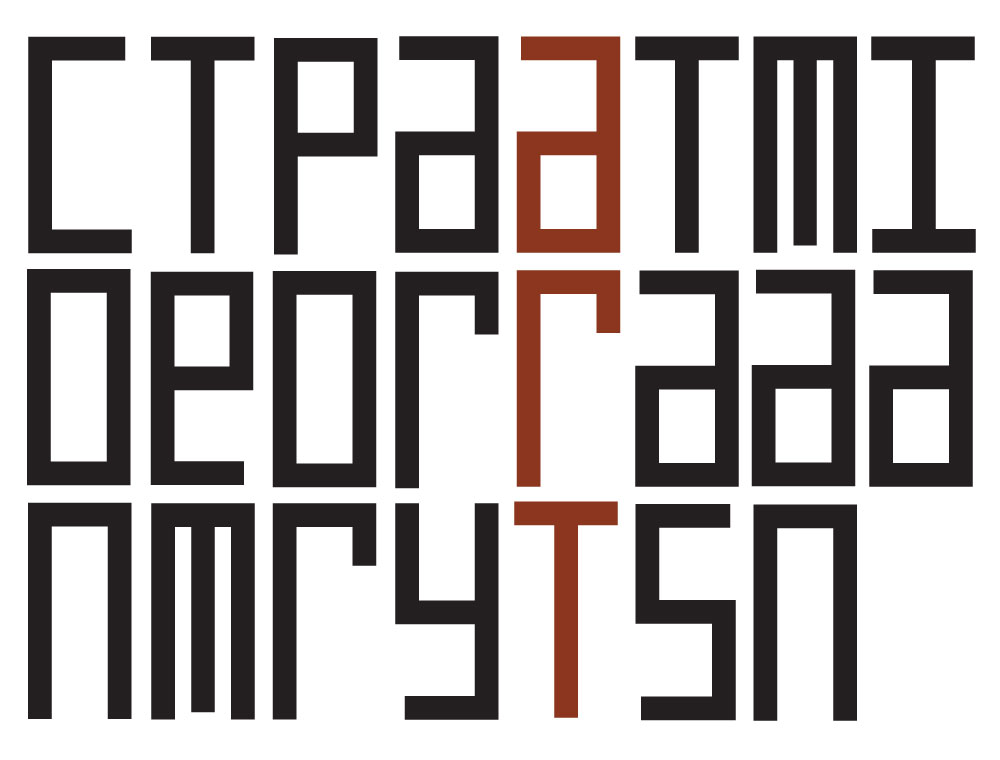Artist
ELIZABETH NEWMAN
The Unprecedented Dark Light of the New Letters
Date: 01-Mar-2008 – 30-Mar-2008
Location: Contemporary Art Tasmania
No to spectacle no to virtuosity no to transformations and magic and make-believe no to glamour and transcendency of the star image no to the heroic no to the anti-heroic no to trash imagery no to involvement of performer or spectator no to style no to camp no to seduction of spectator by the wiles of the performer no to eccentricity…
This quotation from Yvonne Rainer is commonly known as the ‘No to spectacle’ manifesto. What I find so exhilarating about it is its strident negativity, and its ‘breathless lack of punctuation’: it’s really more of a Yes than a No.
I have performed my own editing of Rainer’s text since I left out two more items that she says No to, since I didn’t want to say No to them myself. These were ‘no to moving or being moved’, and I couldn’t really bring myself to include those two phenomena. I guess you could say I’m saying No to some of Rainer’s No.
Right now I also want to say No to several things. I could summarise it as No to the current noisy discourse: to the ‘voices and images of vehement intrusiveness and dubious authority’ that Eden Liddelow despises as the current dominant cultural conditions. I agree with Liddelow that ‘The fictive and unnecessary occupy our attention much more than the necessary.’ And that there is too much representation: ‘Silence and darkness are impermissible.’ What is required now is a reassessment about what is really necessary.
It’s this sort of feeling that has led me to seek out the recent past: to seek guidance and inspiration from certain precursors whose values you will recognize in this work. (Morris, Judd, Rainer, Paxton, Brown) We could name these qualities as quietness, feigned indifference or neutrality, passivity, irony and the promotion of the pedestrian or ‘everyday’: the negativity and absence that incarnates the avant-garde project.
Composer Steve Reich makes a link between Cage’s 4’33”, the silent piece, and Paxton’s Satisfyin’ Lover, the walking piece: silence in the place of music, and walking in the place of dance. Rainer also made a work at this time (We Shall Run) that consists only of running as movement. These gestures show us that a little structural space has to be made for lack to exist. In the necessarily paradoxical words of Cage: ‘I have nothing to say and I am saying it.’
Strangely, this past that I look to now, the early 1960s, is also the past of my childhood. One might describe it as a return to the past, and therefore ask why, and why now? But I think it would be incorrect to view history in that way, as only a chronological trajectory. Rather, I think of those avant-garde moments as unfinished, as still going on now, continuous with the present – as with the unconscious, about which we say that it has no time (only Now).
What do we see here in this exhibition? Wall pieces in a workman-like product in a rectangular shape (portrait format) that articulate the most minimal (necessary) structural conditions of art. Manufactured wood is both warm with human touch and a trace of nature, and simultaneously cold and silent and universal. It’s beautiful already.
Some of these works of art might be useful to a human being: a place to put something, or light to see by. One work has something overtly living and impermanent attached to it (a plant); if you wanted it to last you would have to think about it from time to time.
The one with the lights has standard shop-bought fittings that contain a beauty beyond their prosaic use and appearance: a condensation of the banal and the sacred. Their empty shape is also rectangular, like their support: a place for the subject, perhaps. One might want to think about the concept of lux: of light in its signifying and real dimension. Light as enlightening, as truth and knowledge, as distraction, as deception, as blinding; lux as painful, say some. These are a few ideas as a starting point.
It’s well known from logic that two negatives make a positive. We also know from Freud that a negation is really an affirmation: it’s not my mother in the dream, for instance, or, I don’t mean to offend you, but…. This is because human subjectivity is founded upon a primordial affirmation, a fundamental Yes to the signifier and therefore to life. It’s only because of this Yes that we can say No, and it’s because of this that a No is always also a Yes.
This exhibition is a part of that No, which is also inevitably a Yes.
Lizzy Newman
May 2007
